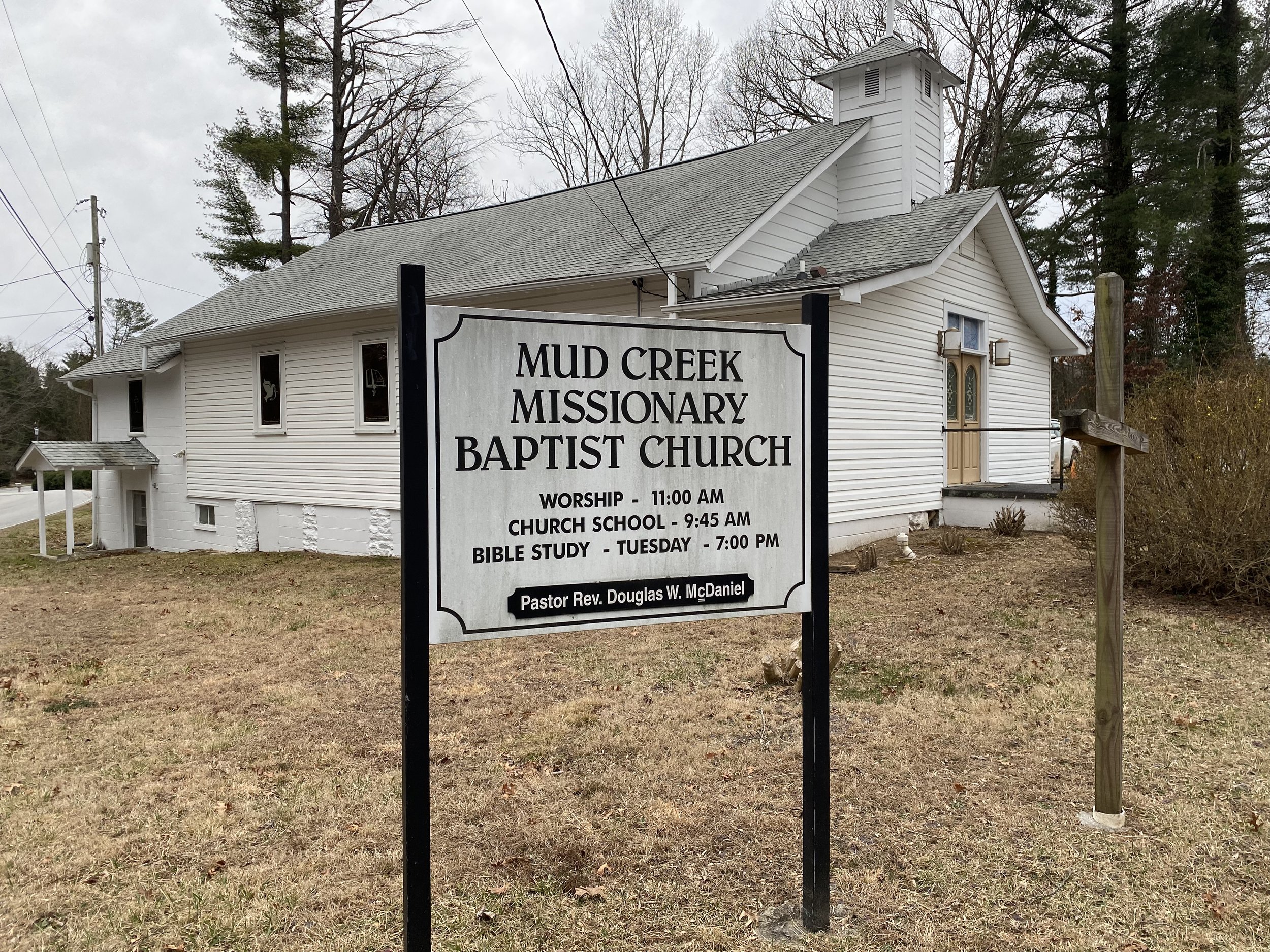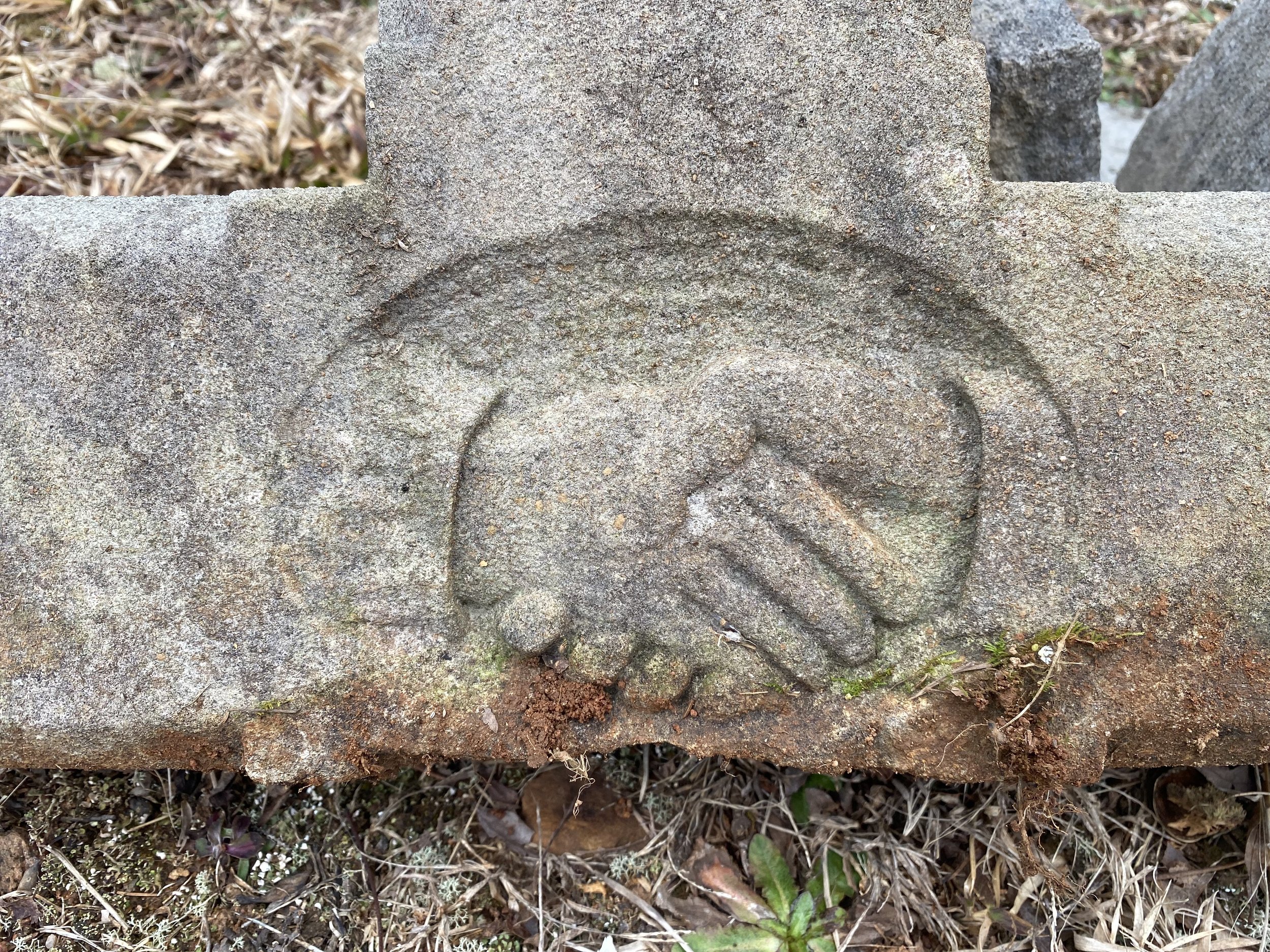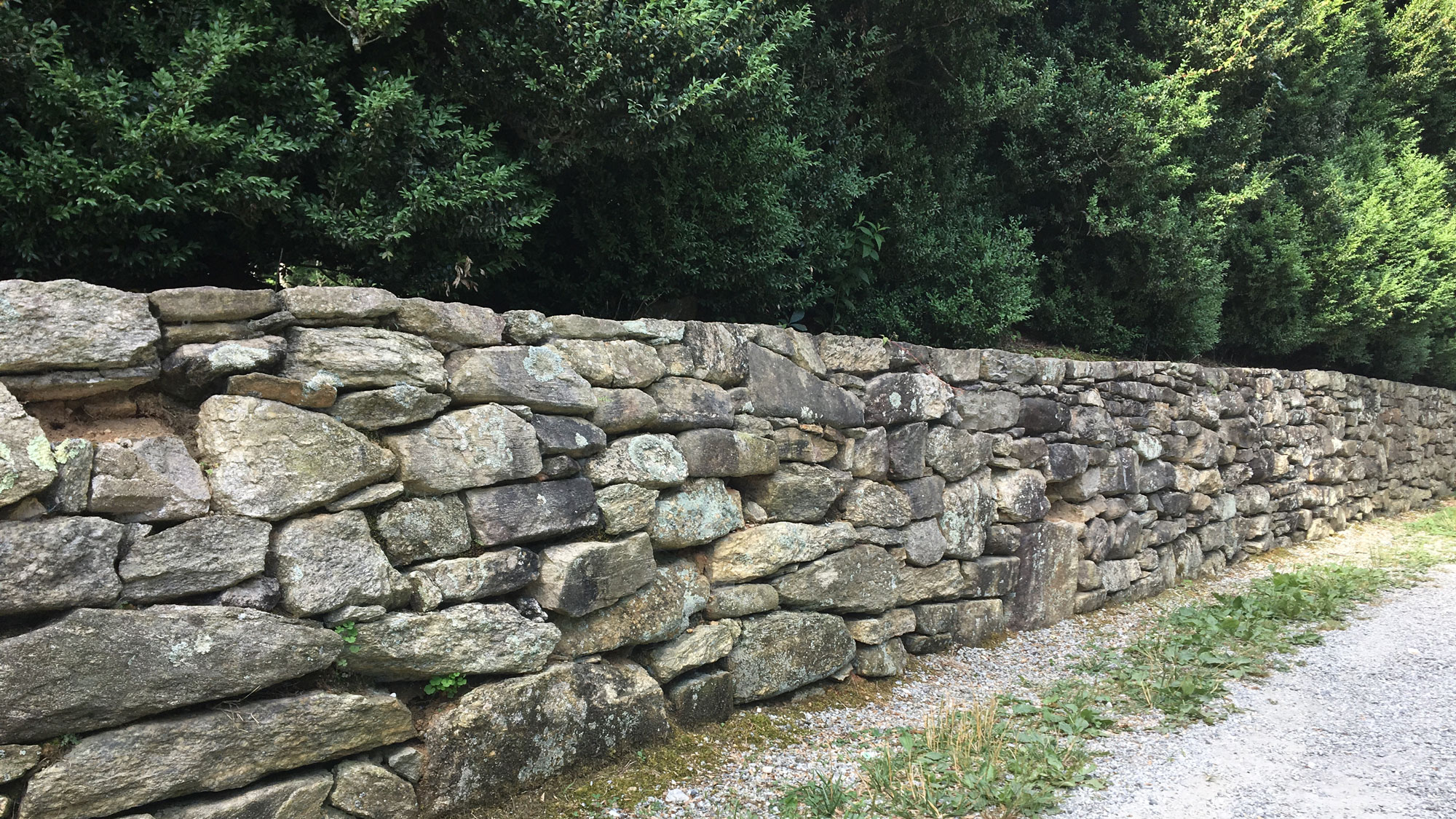The Society of Necessity
/The advance guard of a winter storm loomed on the horizon as I struggled to raise his fallen tombstone. The rose-colored granite resisted my first attempts to lift it back into place. Determined to see his name, I gave the ponderous stone one last heave and it slowly returned to its base – crooked and off-center, but upright, nonetheless. There, slightly discolored from resting in the red North Carolina clay, I could now read his name.
“Hello, Henry,” I whispered into the wind. “I’ve heard a lot about you.”
----
Following the Civil War, former slaves in and around Henderson County created a nascent community in what is now known as East Flat Rock. Prior to the war, there existed a substantial population of slaves and freemen.
In 1860, … Henderson County had a 13 percent slave population (amounting) to about 1,382 enslaved souls, many of whom belonged to elite Charlestonians who summered at Flat Rock village and Hooper's Creek (Inscoe, Bureau of the Census 1860).
The lack of racial violence and overt discrimination against freedmen combined with the availability of cheap land and the need for both skilled and unskilled labor to make Henderson County a good place to settle in the post-Civil War era. (Culpepper)
Two of the newly emancipated slaves were Shadrack and Sophia Shield who had been owned by Alexander Campbell King. The couple carved out a living as farmers along with their sons Mac, Rueben and Frederick. According to the census of 1870, their daughter Malissa lived nearby with her husband Israel Simmons.
Israel was to become one of the founding fathers of an extensive and relatively successful black community in East Flat Rock – much of it located adjacent to the present-day Mine Gap Road.
Israel Simmons was the first of the black Charlestonians to convert savings into soil. Simmons agreed to pay ninety dollars for eighteen acres of land in December 1871 (Henderson County Historical and Genealogical Society Vol. 24). This purchase marked the beginning of the black settlement along the eastern, back "wood fringes" of several white estates, including King's Argyle and Baring's Mountain Lodge…
A depot was built in this area when the planters' old dream of a railroad linking Charleston to Flat Rock became a reality in 1879. Because passengers disembarked the Asheville and Spartanburg railroad east of Flat Rock village, the depot and adjacent settlement were named East Flat Rock. (Culpepper)
The new community grew and consolidated with a growing number of purchases of land by the freemen in Henderson County.
Considerable money passed between black and white Charlestonians after 1870. From a business perspective, it was a matter of supply and demand. The planters and their associates had what freed people wanted--cheap, uncultivated land and plenty of it. Freedmen could provide or withhold what the planters wanted- reliable, experienced labor. It made good sense for the elite to encourage "their people" to stick around if not in Charleston, then in Flat Rock, where they could work during the season and tend the vacant estates through the winter. It made equal sense for the black Charlestonians to deal with the white men and women whom they knew and who knew them. (Culpepper)
The black settlement in East Flat grew in the late 19th century as founding families expanded and more black Americans moved to the area. This expansion of the population created several issues associated with rapid growth.
Additional people created additional problems. Housing was cramped and garden space was dear because most families could not afford to buy their own land or build homes right away. The delicate matter of where African Americans could bury their dead also became an issue with the passage of time and generations. But what could be done? (Culpepper)
Fortunately for the residents of this enclave of Black Americans, “a remarkable young man named Henry Shield Simmons stepped forward with a solution to these and other problems plaguing his community.” (Culpepper)
---
Henry Shields Simmons
Photo Courtesy of Hortense Potts
Henry Shields Simmons
Henry Simmons, the son of Malissa and Israel Simmons, was born in Henderson County in 1867 – part of a remarkable generation of free Americans whose parents had spent much of their lives toiling as slaves. Although there is no written record of his experiences as a child, it is known that “his parents Israel and Malissa and grandparents Shadrack and Sophia Shield were among the most respected, community-minded citizens of East Flat Rock.” (Culpepper)
Obviously imbued with that familial sense of community, by the time Henry was just 18 years old he clearly saw a need in his community and resolved to do something about the pervasive needs of his friends and family. That “something” was to become The Society of Necessity that Henry Simmons founded in 1885.
Henry saw that the sick in his community needed support both financially and spiritually. This was especially true at a time when there were no government agencies or Social Security and very few insurance companies on which people could rely.
(Simmons) understood the necessity for access to short-term loans to help people make it through the long winter months when work could be hard to come by and the bills could mount. He was aware that when death came in a family, there was always the need for an affordable place to do the burying. (Greene)
The Society of Necessity may have been patterned after similar initiatives in Charleston, SC.
… notably the Brown Fellowship Society and the Humane Brotherhood or Society of Free Dark Men (Powers 1994; Greene 1996). These exclusive antebellum fraternities offered the free brown and black families of Charleston a variety of services, including burial in privately owned cemeteries and financial assistance for children whose parents left insufficient estates to meet their daily and educational needs. (Culpepper)
The Society appointed officers and a board of trustees and, under the direction of Henry Simmons, got to work. Henry was to be the Society President for the next 65 years until his death in 1949.
Although financial assistance was at the core of the Society’s mission, Henry’s long life of service demonstrated that his commitment to helping his neighbors went well beyond a simple exchange of money. He possessed a wide range of skills and expertise which he freely shared with others.
(Henry) was an intelligent and imaginative man who believed in hard work and helping his neighbors. He displayed an avid interest in the law and would spend many of his days at the Superior Court of Henderson County taking careful notes on the cases he observed. Then on Sundays, before and after services at Mud Creek Baptist Church, he would share what he had learned with others, counseling them on the importance of receipts, deeds and wills.
At a time when there were very few Black landowners, Henry Simmons bought land from White landowners around Mine Gap Road. Subsequently, many people in the East Flat Rock area purchased the land for their homes from Henry Simmons, and afterward it wasn’t unusual for him to utilize his carpentry skills and help the new landowner build his house. (Greene)
Simmons also found the time to grow a large garden, maintain fruit trees, and operate a neighborhood cannery so elderly and needy residents would have enough to eat during lean times. Other members chopped firewood, shoveled coal, sewed clothing, purchased medicine, delivered babies, tended the sick, built caskets, and buried the dead. The Society collected money to purchase textbooks and help maintain the schoolhouse. (Culpepper 2002).
Membership in the Society
Membership in the Society of Necessity was secured with an initiation fee of $1.00, a monthly contribution of 10 cents, and a commitment to be a “person of good moral character.” At the time of initiation into the Society, new members were required to take an oath of fealty to the principles espoused by the Society.
“I agree to support and obey the constitution and by-laws of the Society of Necessity of Flat Rock, North Carolina, to which I have been elected a member, so help me God.” (Greene)
The society placed money collected into the General Fund and the money was distributed to members on the basis of need.
Although the amount of money the Society collected would appear to be minimal, it must be pictured in its context. Expenditures for a doctor’s fee at the turn of the century could amount to 50 cents or a dollar. Medicine was equally inexpensive.
Between November 3, 1903, and October 4, 1904, a total of 60 payments for sick benefits were paid to Society members. Thirty-nine of these were for payments of 50 cents. The other 21 ranged from a dollar to $15.00. The money was paid directly to the Society’s members, which at that time numbered only thirty-one. Dr. John Potts (former President of Voorhees College and a native of East Flat Rock) stated, “Sixty payments to 31 members over a period of one year shows how great a need the organization was meeting.”
Short-term loans were also available to Society members. If the need arose, a member could borrow money to pay a mortgage payment. This was especially helpful during the winter months when a family could not find work and the mortgage was due. Between June 9, 1901, and March 2, 1903, the Society made eleven loans, ranging from 10 to 50 dollars, to ten of its members. A borrower put up his land as collateral and the loan was made at no interest. It might take a while, but the record shows that all these loans were paid back in full. (Greene)
Mud Creek Missionary Baptist Church in East Flat Rock
Mud Creek Missionary Baptist Church which was formed in 1867 as an independent church for black members from Flat Rock churches, served as the heart of the Society, with most church members contributing to the Society. (Beasley De Bona)
The monthly donation amount remained unchanged – 10 cents a month – for 81 years until the Society increased dues to 25 cents or just $3 per year. In 1953, it became part of the United Fund which increased its financial base, but that association ended in 1966 and there is no record of the reason for the change. (Greene)
Oakland Cemetery
Very early in its history, The Society of Necessity acted upon the urgent need to find a suitable burial ground for its members.
In 1889, the society secured a bit of land along the railroad tracks in East Flat Rock for a cemetery. Henry S. Simmons purchased the property from Mrs. Constance Dent Baring for thirty-five dollars (Henderson County Historical and Genealogical Society 1838-1948). The burial ground was named Oakland. From that point African Americans could lay loved ones to rest in marked, well-tended graves nearby rather than interring them anonymously in sites around Flat Rock. (Culpepper)
The cemetery is located just off the present-day Highland Park Road, about 1/4 mile from N. Highland Lake Rd on the left.
The Sick Committee
The Sick Committee of the Society was created to tend to members who suffered an illness or needed medical attention. Given the state of available medical care for Blacks at the time, this was an essential service for many.
To put this in perspective, one has only to realize that until the 1920s, Blacks in Henderson County were denied complete hospital care. It wasn’t until then that a Black ward was opened at the old Patton Hospital. At the turn of the century oftentimes the only nursing attention someone could get would be through the visits made by Society members. Depending on the gravity of the illness, someone could be at the patient’s home all day and all night preparing food, cleaning and tending to the patient’s needs. (Greene)
The Sick Committee also made arrangements for the internment of members when they died. According to an oral account offered by William Judson King who was raised in the East Flat Rock community:
(N)o undertakers were available to Blacks in those days. The committee itself would see to the funeral preparations. Members would bathe and dress the body, see that a coffin was secured (often made by the blacksmith or some local carpenter), and have the grave dug and the body lowered.
Oakland Cemetery was owned and tended by the Society and any member could buy a burial plot for the sum of one cent per square foot. In 1942 the price of a cemetery lot was raised to two dollars. By 1964 a lot would cost only six dollars. (Greene)
Henry Shields Simmons is credited with founding The Society of Necessity, but it is apparent that the success of the organization was a function of both his vision and the community’s willingness to embrace and preserve the mission of The Society.
The Society of Necessity proved that through cooperative effort and dedicated leadership, people could improve their lives and find a measure of security. A great deal of the credit goes to Henry Shields Simmons, but without the like-mindedness of the community, it would never have become a reality. The legacy of the Society is that people can make a difference when the intent is clear and the good of the people is the purpose.
The Society was developed and maintained like a functioning family. There was order in the family. There was a concern for the family. There was help from the family. (Greene)
---
Part of the Memorial Marker for Israel Simmons in Oakland Cemetery.
As I turned to leave the cemetery, my gaze swept over the many graves dotting the hillside not far from where most of the people buried there once lived. Some of the markers are too old and weathered to any longer read their inscriptions. Other graves are marked with simple white crosses with no indication of the person’s name – souls now known perhaps only to God.
One marker, that of Henry’s father, Israel, is broken and the top of the memorial lies on the ground now. That section of granite has two hands clasped together in an eternal handshake - preserving in stone the spirit of cooperation and community that defined The Society,
The story of The Society of Necessity is a testament to both the vision of Henry Shields Simmons - and to a remarkable community that embraced his vision. Together through the generations, they created an exceptional society whose legacy is defined by its compassion, generosity of spirit, and unwavering commitment to preserving the dignity of all people.
Sources/Acknowledgements
Journal Article
Black Charlestonians in the Mountains: African American Community Building in Post-Civil-War Flat Rock, North Carolina
Linda Parramore Culpepper
Journal of Appalachian Studies
Vol. 8, No. 2 (Fall 2002), pp. 362-381 (20 pages)
https://www.jstor.org/stable/41446547
“A Brief History of the Black Presence in Henderson County”
The Black History Research Committee of Henderson County
with Gary Franklin Greene
(Full text available at https://blackhistories.org/2020/07/11/the-society-of-necessity/)
Flat Rock's Society of Necessity insured the common good
Beth Beasley De Bona Times-News Staff Writer
Published Feb 21, 2016
https://www.blueridgenow.com/story/news/2016/02/21/flat-rocks-society-of-necessity-insured-the-common-good/28337360007/
African-American History in Henderson County, Part Two
Missy Schenck
Historic Flat Rock Inc | Feb 24, 2021 | Blogs, Historic
https://historicflatrockinc.com/african-american-history-in-henderson-county-part-two/
Mountain Masters: Slavery and the Sectional Crisis in Western
Inscoe, John C. 1989.
North Carolina. Knoxville: The University of Tennessee Press.










